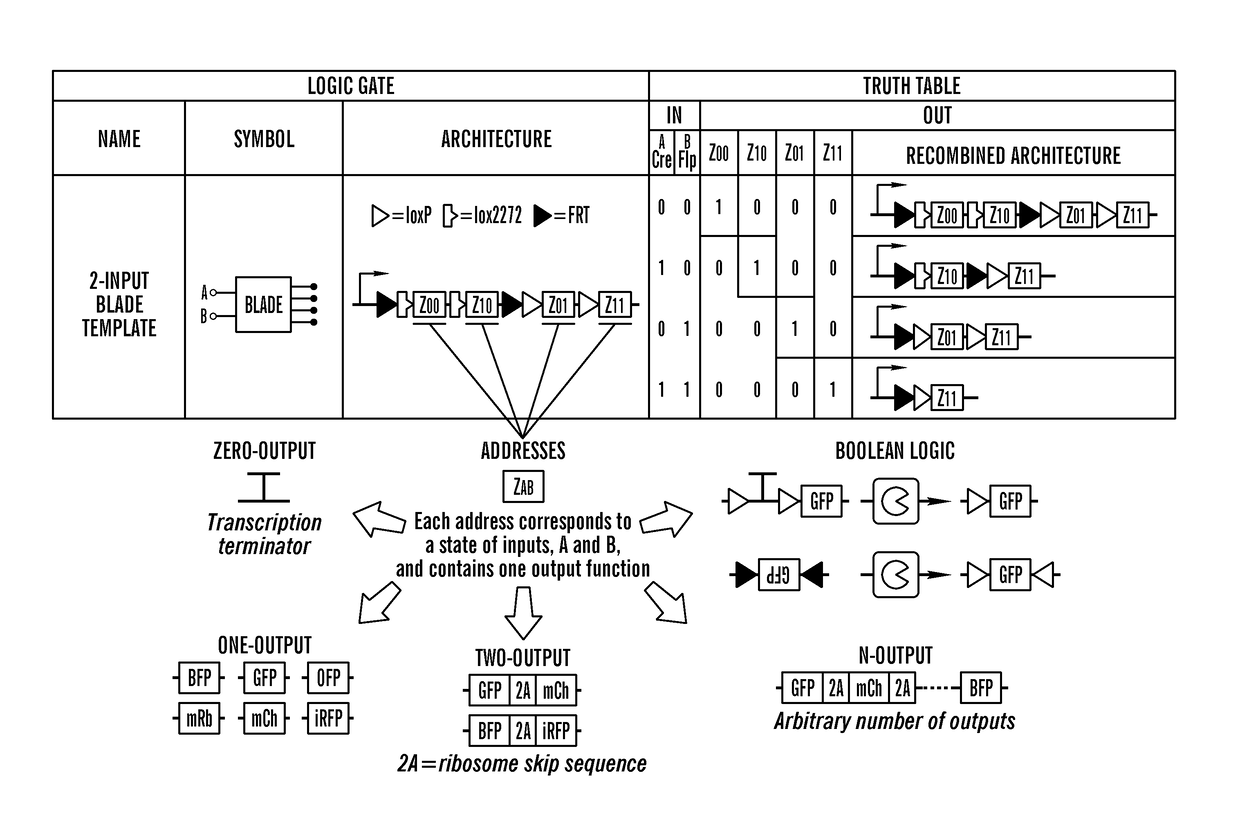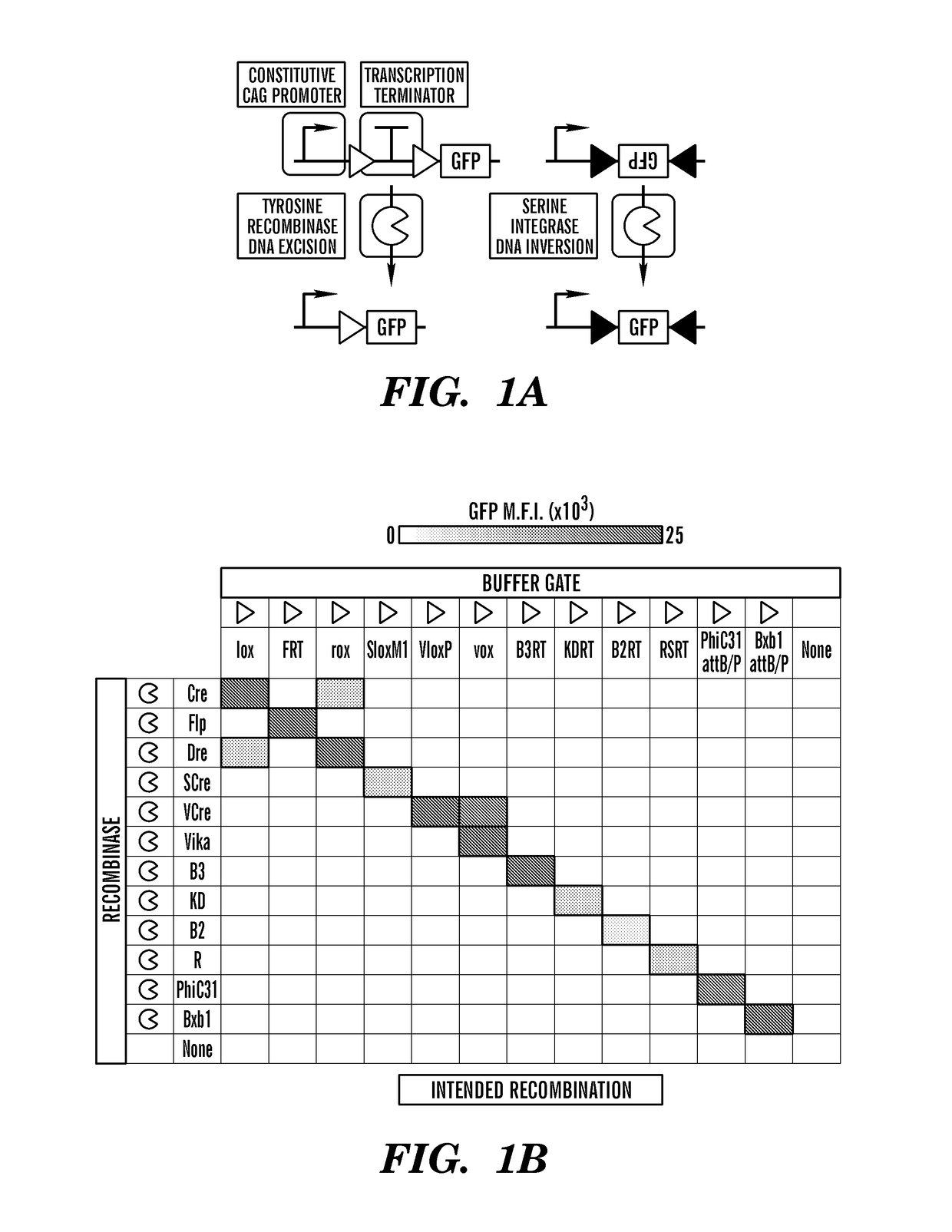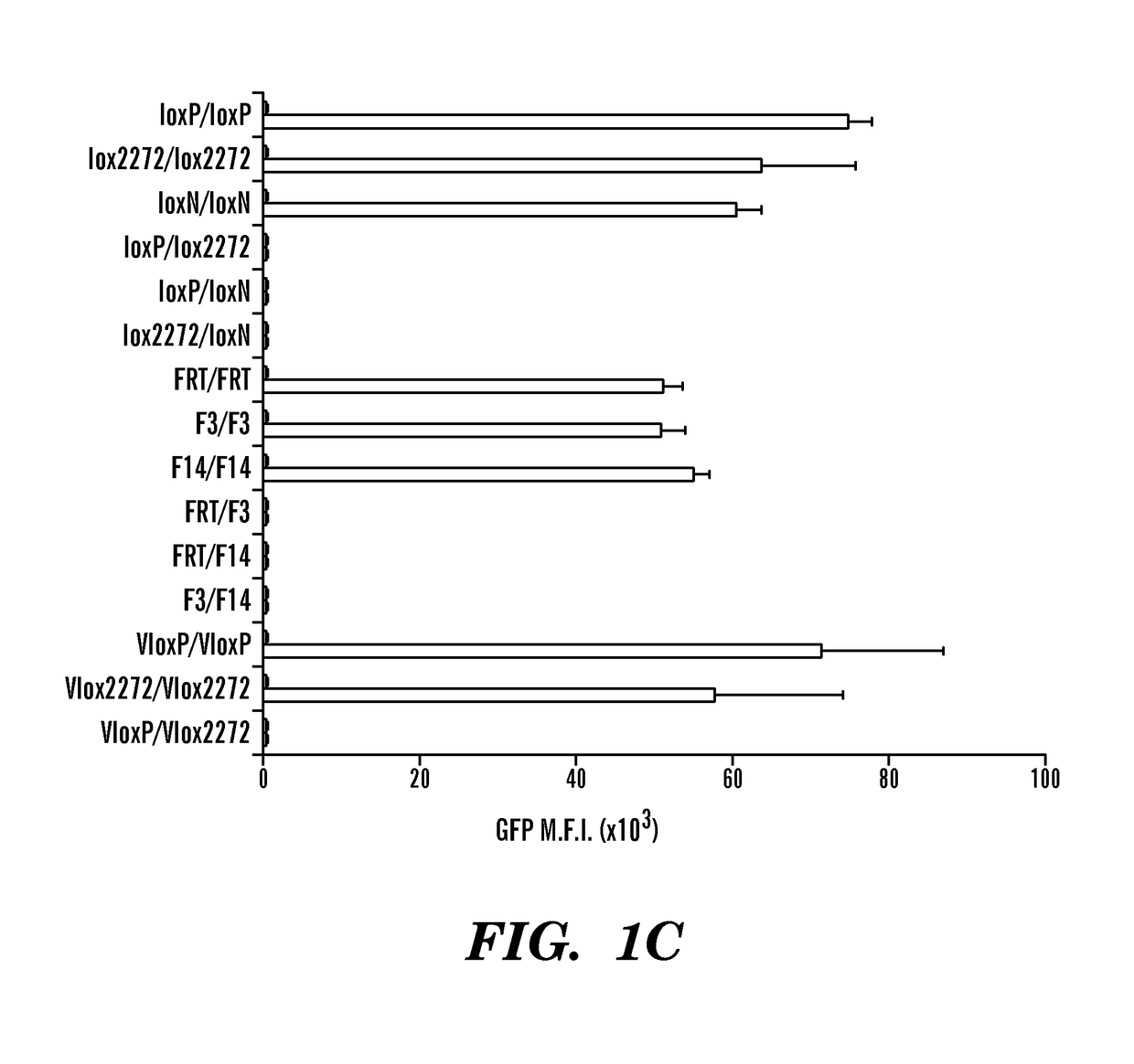DNA recombinase circuits for logical control of gene expression
a gene expression and logical control technology, applied in the field of controlled gene expression, engineered gene circuits, and adoptive t cell therapies, can solve the problems of complex genetic circuits that remain difficult to engineer, and achieve the effect of stable memory of the change in genetic expression
- Summary
- Abstract
- Description
- Claims
- Application Information
AI Technical Summary
Benefits of technology
Problems solved by technology
Method used
Image
Examples
example 1
[0465]A useful feature of site-specific recombinases is that they can act as transcription activators or repressors depending on the placement of recombination sites. For instance, buffer (BUF) gates permit recombinase-mediated gene expression through tyrosine recombinase-mediated excision of a transcription terminator or serine integrase-mediated inversion (FIG. 1A). Conversely, NOT gates function to terminate gene expression via placement of recombination sites around a gene of interest and elimination of expression through tyrosine recombinase-mediated excision or serine integrase inversion. Increasingly, optogenetics, animal disease models, and study of stem cell generation and differentiation have relied on recombinase-based strategies to achieve tissue-specific gene expression or knockout, utilizing a tissue-specific promoter (TSP) to drive the recombinase expression in combination with a BUF or NOT gate containing a gene of interest (GOI)18,20-23. Although these tools have be...
example 2
[0469]The inventors exploited these characteristics to establish a platform for generation of N-input order-independent logic gates called Boolean Logic and Arithmetic through DNA Excision (BLADE). All logic computation for BLADE circuits is done on a single transcriptional layer and circuit construction is based on a BLADE template. N-input BLADE templates feature 2N distinct regions of DNA termed addresses (Z). Each address is accessible only via a specific combination of inputs. For example, the 2-input BLADE template contains four addresses, Z=ZAB=Z00, Z10, Z01, and Z11, corresponding to each state of A and B inputs (FIG. 2A). Each address contains one output function, which ranges from having zero outputs (transcription terminator), through arbitrary numbers of outputs separated by ribosomal skip sequences (2A), to Boolean functions like BUF.
[0470]For initial characterization of the 2-input BLADE platform, single-output functions were tested. The inventors constructed a 2-input...
example 3
[0473]The development of multi-input logic gates requires robust and orthogonal recombinases. The inventors tested more than 10 different recombinases, including both the tyrosine and serine recombinase family in HEK 293T, a human embryonic kidney cell line. To test the tyrosine recombinases, a reporter plasmid for every recombinase was constructed where the corresponding recombination sites flanking a neomycin resistance gene followed by a SV40 polyA sequence (ref) is placed between a CAG promoter and a GFP. The neomycin and SV40 polyA sequence forms a transcriptional stop cassette and prevent the transcription of GFP. When the proper recombinase is expressed, it will bind to the two recombination sites and excise the stop cassette between the recombination sites (FIG. 11A). This reporter construct is also known as a buffer gate and will be used in other circuit design detailed later in this text. For serine recombinases, the recombination sites are placed between a GFP that is in ...
PUM
| Property | Measurement | Unit |
|---|---|---|
| nucleic acid logic cassette | aaaaa | aaaaa |
| TG | aaaaa | aaaaa |
| nucleic acid | aaaaa | aaaaa |
Abstract
Description
Claims
Application Information
 Login to View More
Login to View More - R&D
- Intellectual Property
- Life Sciences
- Materials
- Tech Scout
- Unparalleled Data Quality
- Higher Quality Content
- 60% Fewer Hallucinations
Browse by: Latest US Patents, China's latest patents, Technical Efficacy Thesaurus, Application Domain, Technology Topic, Popular Technical Reports.
© 2025 PatSnap. All rights reserved.Legal|Privacy policy|Modern Slavery Act Transparency Statement|Sitemap|About US| Contact US: help@patsnap.com



